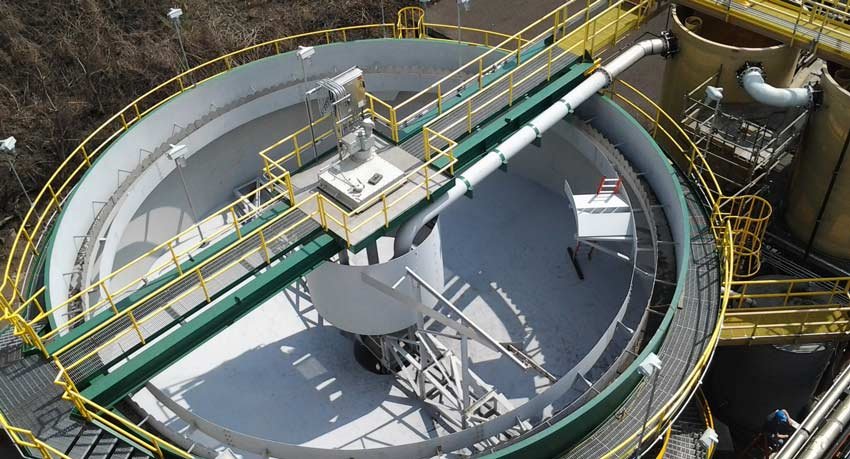Understanding PFNA in Water: Risks, Regulations, and Remediation
Introduction
Perfluorononanoic acid (PFNA) is a persistent environmental contaminant that has garnered increasing attention due to its potential health risks and widespread occurrence in water supplies. As consumers, municipalities, and regulatory bodies grapple with the implications of PFNA contamination, understanding its origins, effects, and remediation strategies becomes crucial. This article delves into the complexities of PFNA in water, providing insight into regulatory frameworks, health impacts, and innovative treatment solutions.
What is PFNA?
Chemical Properties and Sources
PFNA is a type of per- and polyfluoroalkyl substance (PFAS), a group of synthetic chemicals known for their water- and grease-repellent properties. PFNA is used in various applications, including manufacturing non-stick coatings, water-resistant fabrics, and firefighting foam. Its persistent nature in the environment, often referred to as "forever chemicals," stems from its resistance to degradation.
Pathways to Water Contamination
PFNA enters water bodies primarily through industrial discharge, landfill leachate, and runoff from treated surfaces. Large-scale operations such as manufacturing facilities and airports have been identified as significant sources of PFNA. According to studies, the prevalence of PFNA in surface and groundwater has increased, reflecting industrial activity and inadequate regulations.
Regulatory Landscape: A 2025 Overview
EPA Guidelines and State Regulations
As of 2025, the Environmental Protection Agency (EPA) has established more stringent guidelines for PFNA and other PFAS, including a proposed Maximum Contaminant Level (MCL) of 0.002 parts per billion (ppb) in drinking water. Some states have independently enacted even stricter regulations, reflecting heightened public concern. For instance, California’s water quality standards mandate PFNA concentrations below 0.001 ppb, making it vital for water treatment facilities to adopt advanced monitoring and remediation technologies.
International Regulations
Globally, countries are beginning to unify their approaches to PFAS regulation. The European Union’s REACH program has set the stage for comprehensive assessments and restrictions on PFAS, including PFNA, emphasizing the protection of public health and the environment.
Health Risks Associated with PFNA Exposure
Toxicological Profile
Research indicates that PFNA exposure is linked to various health risks, including developmental issues, immune system dysfunction, and chronic diseases such as liver damage and cancer. According to recent epidemiological studies, children exposed to PFNA exhibit reduced antibody responses, raising concerns about vaccine efficacy.
Vulnerable Populations
Particular attention must be given to vulnerable populations, including pregnant women and children, who may experience adverse effects from lower levels of PFNA owing to physiological differences. Public health initiatives are increasingly focused on monitoring and mitigating exposure in these groups.
Analytical Methodologies for PFNA Detection
Sampling and Testing Techniques
To manage PFNA contamination effectively, accurate detection methods are essential. Recent advancements in analytical chemistry have improved the sensitivity of mass spectrometry-based techniques, enabling parts per trillion (ppt) detection levels. Additionally, solid-phase microextraction (SPME) is gaining traction for field sampling, reducing the risk of contamination during collection.
Innovations in Detection
Emerging methodologies, such as biosensors and nanotechnology-based detection, show promise in identifying PFNA in water with unprecedented sensitivity and specificity, thereby facilitating more effective monitoring strategies.
Treatment Technologies for PFNA Remediation
Conventional Treatment Methods
Traditional water treatment processes, such as granular activated carbon (GAC) and reverse osmosis (RO), have shown efficacy in removing PFNA. According to industry studies from 2024, GAC can reduce PFNA concentrations by over 90% under optimal conditions. However, challenges remain regarding the longevity and saturation of GAC media, necessitating frequent replacement.
Advanced Oxidation Processes (AOP)
Advanced oxidation processes (AOP) have gained attention as effective treatment methods for PFNA. These methods utilize hydroxyl radicals to degrade PFNA into less harmful byproducts. Research indicates AOP methods can achieve over 99% PFNA removal rates, showcasing their potential for large-scale implementation in water treatment facilities.
Innovative Technologies on the Horizon
New technologies such as electrochemical oxidation, ion exchange systems, and photodegradation are being researched as viable PFNA remediation solutions. These methods promise lower operational costs and improved sustainability compared to traditional treatment systems.
Case Studies: Successful PFNA Remediation
Municipal Initiatives
Several municipalities across the United States have implemented successful PFNA remediation strategies. A noteworthy example is the recent water treatment project in Hoosick Falls, New York, where a combination of GAC and AOP drastically reduced PFNA levels. Community engagement and transparency during the process built public trust, highlighting the importance of stakeholder involvement in environmental remediation projects.
Industrial Remediation Efforts
Industries are also stepping up to address PFNA contamination proactively. A major manufacturer in Michigan has invested in a state-of-the-art treatment plant utilizing advanced filtration and oxidation techniques, capable of reducing PFNA concentrations significantly before discharge. Their commitment to compliance and environmental stewardship serves as a model for other industries facing similar challenges.
Public Awareness and Involvement
Community Education Initiatives
Raising public awareness about PFNA contamination is vital for fostering proactive community engagement. Numerous NGOs and water advocacy groups have begun educational campaigns, explaining the risks associated with PFNA and encouraging local parties to advocate for better monitoring and contamination solutions.
Citizen Science and Advocacy
Citizen participation in environmental science has grown, leading to increased public pressure for transparency and action from both local governments and industries. Tools like community-based water testing programs empower citizens to monitor their water sources for PFNA and other contaminants.
Conclusion
PFNA in water represents a significant environmental and public health challenge. As industries, municipalities, and regulatory bodies confront this issue, it is imperative to adopt a multifaceted approach encompassing stringent regulations, advanced detection methods, innovative treatment technologies, and active community engagement. With continued research and collaboration, we can navigate the complexities of PFNA contamination, ensuring safer water for future generations. The importance of understanding PFNA’s health impacts, coupled with the urgency of implementing robust remediation strategies, cannot be overstated. As engineering professionals and environmental stewards, we are uniquely positioned to lead this vital effort and safeguard public health.
Author Bio:
As a senior environmental engineer with over a decade of experience in designing and implementing water treatment solutions, I have a profound commitment to improving water quality and public health. My expertise extends to the latest regulatory developments and innovative technologies related to environmental engineering.
source https://www.waterandwastewater.com/pfna-in-water/



No comments:
Post a Comment